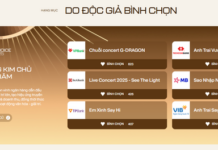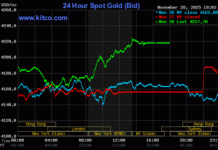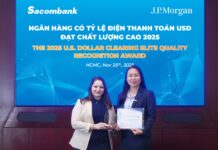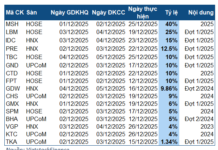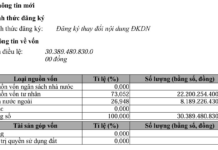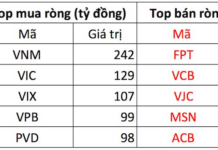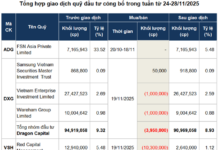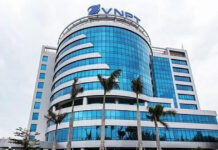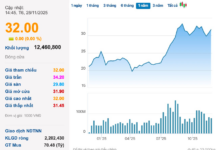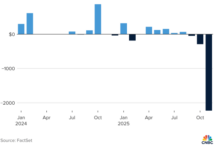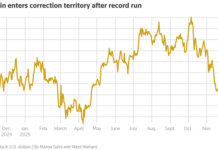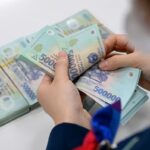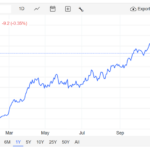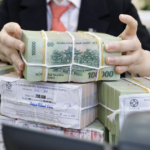The Prime Minister has recently issued Official Dispatch No. 122/CD-TTg to the Governor of the State Bank of Vietnam (SBV) regarding enhanced measures for credit management in 2024. The dispatch particularly emphasizes the need to lower lending rates by reducing costs, simplifying administrative procedures, and embracing digital transformation and technological advancements.
No intense competition in deposit rates expected
Following the Prime Minister’s dispatch, the SBV promptly issued Official Letter No. 9774, instructing credit institutions and SBV branches in provinces and cities to stabilize deposit rates and reduce lending rates. The letter also urged the implementation of more effective measures to simplify loan procedures, enhance the application of information technology, and accelerate digital transformation in the lending process…
In the market, according to reporters from NLD, the upward trend in deposit rates continued in November 2024, but the increase was not significant.
SeABank is the latest addition to the list of banks adjusting their deposit interest rates, offering higher rates for certain terms. For deposits with a term of 1-2 months, the interest rate stands at 3.4%/year, while for 3-5 months, it is 4.1%/year. The highest interest rate at this bank is 5.45% for a term of 18 months.

In the last months of 2024, there is unlikely to be intense competition in deposit rates. Photo: TAN THANH
Currently, several commercial banks offer deposit rates above 6%/year.
Mr. Truong Dac Nguyen, Head of Analysis at WiGroup Data Solutions Company, explained that towards the end of the year, businesses tend to ramp up production and operations, resulting in increased capital demands. This, in turn, prompts banks to compete for deposits by offering higher interest rates.
“This phenomenon is not unique to this year but has been observed in previous years as well, indicating a seasonal pattern. Nonetheless, interest rates remain relatively low, and this adjustment phase will not last long enough to reverse the overall trend,” Mr. Nguyen added.
Economist Dr. Dinh The Hien shared that the deposit interest rates have been maintained at a reasonable level of 4.5%-5%/year, offering a safe investment option with positive real interest rates when compared to inflation. He noted that the recent increases in deposit rates are mainly concentrated in medium and small-sized banks, likely to meet specific capital needs rather than reflecting a broader market trend.
“Therefore, we are unlikely to witness an intense competition in raising deposit rates, especially after the government and the SBV’s intervention to urge credit institutions to maintain low-interest rates, given the current low inflationary environment,” Dr. Dinh The Hien stated.
Market needs an injection of VND 670,000 billion
According to SBV statistics, the total credit balance of the system as of the end of September 2024 reached VND 14,700,000 billion, significantly surpassing the total mobilized capital of VND 14,500,000 billion. This development puts pressure on liquidity, forcing major banks to adjust their interest rate policies to meet the economy’s escalating capital demands.
As of the end of October 2024, the credit growth of the banking system towards the economy exceeded 10.08%. Based on the total credit balance of over VND 14,561,000 billion as of the end of August 2024, achieving the targeted credit growth rate of 15% for the year would require an injection of approximately VND 670,000 billion into the market in the remaining two months.
Amid the ample lending limit, the Bank for Investment and Development of Vietnam (BIDV) continues to roll out credit packages with a total scale of over VND 19,000 billion.
Specifically, BIDV is allocating VND 3,000 billion and USD 50 million to provide preferential loans for textile and garment enterprises with new investment projects or plans to renovate workshops, machinery, and equipment to enhance energy efficiency, reduce environmental pollution, or fulfill green criteria for export orders to markets like Europe, the US, and Japan…
Additionally, BIDV is committing to reducing interest rates by up to 1.5 percentage points compared to its floor rates for loans to projects in the field of clean water supply.
Lending rates to remain competitive
According to a leader of VietinBank, since the beginning of November 2024, the robust implementation of public investment projects has led to increased capital demands from businesses involved in these projects. Consequently, these businesses are less concerned about borrowing costs as lending rates have already reached rock bottom.
Nevertheless, banks can still offer reduced interest rates to efficient businesses. As they have not fully utilized their credit limits, banks are eager to expand their outstanding loans, leading to intense competition.
Commenting on this, Dr. Dinh The Hien stated that lending rates are currently subject to intense competition among banks vying for customers, especially quality ones. Therefore, a unanimous hike in interest rates is unlikely in the year-end period.
“Numerous businesses are in excellent financial health and are enjoying stable operations, borrowing at interest rates as low as 7%/year. In contrast, businesses with weaker performance face much higher borrowing costs. This competitive landscape demands that borrowers also meet certain conditions, not just exerting one-sided pressure on banks to reduce interest rates,” Dr. Hien analyzed.
The director of an agricultural product trading company in the Mekong Delta shared that he had never seen such low lending rates for the agricultural export sector. However, his company is still cautious about borrowing due to concerns about efficiency, opting instead to “lie low” and preserve capital. He added that his company, with its strong credit history, enjoys exceptionally low interest rates of 2.7%/year for short-term VND loans and 3.2%/year for USD loans. “We have never received such preferential treatment from banks as they strive to meet their year-end credit targets. Businesses struggling to secure loans likely face issues with collateral or high-risk loan profiles,” the director remarked.
Banks are making profits
At Agribank, the average deposit interest rate is currently 3.64%/year, but when taking into account related expenses, the average cost of capital mobilization reaches 5.12%/year. In contrast, the average lending rate is 6.8%/year, resulting in a relatively narrow spread of 1.68%/year.
Similarly, at ACB, the average lending rate is 6.67%/year, with a spread of 2.56%/year, translating to an average deposit rate of 4.11%/year.
A senior leader of VietinBank noted that except for Agribank, which is 100% state-owned, commercial banks with a spread of 2% or higher are already profitable.
Mr. Lam Ngoc Tuan, Director of Tuan Ngoc Agricultural Cooperative (Ho Chi Minh City):
Need for loan extension and further interest rate reduction
Tuan Ngoc Agricultural Cooperative is currently borrowing at a commercial rate of 10% with collateral provided by its members. The cooperative has plans to build additional facilities for post-harvest processing and preservation but faces challenges in obtaining capital due to a lack of assets for collateral. As a result, the cooperative can only “survive” without the ability to expand.
While the cooperative has access to preferential loans from the Farmer Support Fund under the Ho Chi Minh City Farmers Association, the amount is insufficient to meet their needs.
In the aftermath of the COVID-19 pandemic, cooperatives in Ho Chi Minh City are facing difficulties and desperately need extended support for recovery, such as loan extensions and reduced interest rates.
Mr. Lu Nguyen Xuan Vu, Chairman of Saigon Entrepreneurs Club, General Director of Xuan Nguyen Group Joint Stock Company:
Constant need for additional capital
The fourth quarter is a period when businesses typically have higher demand for goods and face various expenses, including salary payments and loan settlements. Consequently, most businesses, especially small and medium-sized enterprises and private enterprises, require additional capital.
Recently, many banks have proactively reduced interest rates and introduced attractive loan packages for businesses, albeit with a cautious lending approach. The average interest rate for working capital loans is now 6-8%, reflecting a downward adjustment compared to previous levels. However, with the economy’s slow growth, businesses find it challenging to predict market demand and are therefore reluctant to invest heavily in production, opting instead for a more conservative approach. Businesses fear inventory accumulation and insufficient cash flow to service their bank loans.
Ngoc Anh – Thanh Nhan reported
Unlocking Housing Opportunities: The Prime Minister Calls for Transparency in Social Housing Credit Packages
As per the Prime Minister’s instructions, the State Bank of Vietnam must direct credit institutions to effectively implement and ensure transparency in the social housing and worker housing credit package.
The Fed’s Interest Rate Outlook: Gold Prices Stuck in a Tug-of-War
The global gold price remains in a state of flux during Wednesday’s trading session in the US and Thursday morning (November 28) in Asian markets. Latest economic data reveals a slowdown in the rate of declining inflation in the US, sparking concerns that the Federal Reserve will adopt a more cautious approach in their upcoming interest rate cuts.
The New Trendsetter: Breaking the Mold with an Unexpected Move
“With a nudge upwards, savings deposit interest rates are responding to the short-term liquidity challenges faced by the system during the peak credit growth season towards the year-end.”






